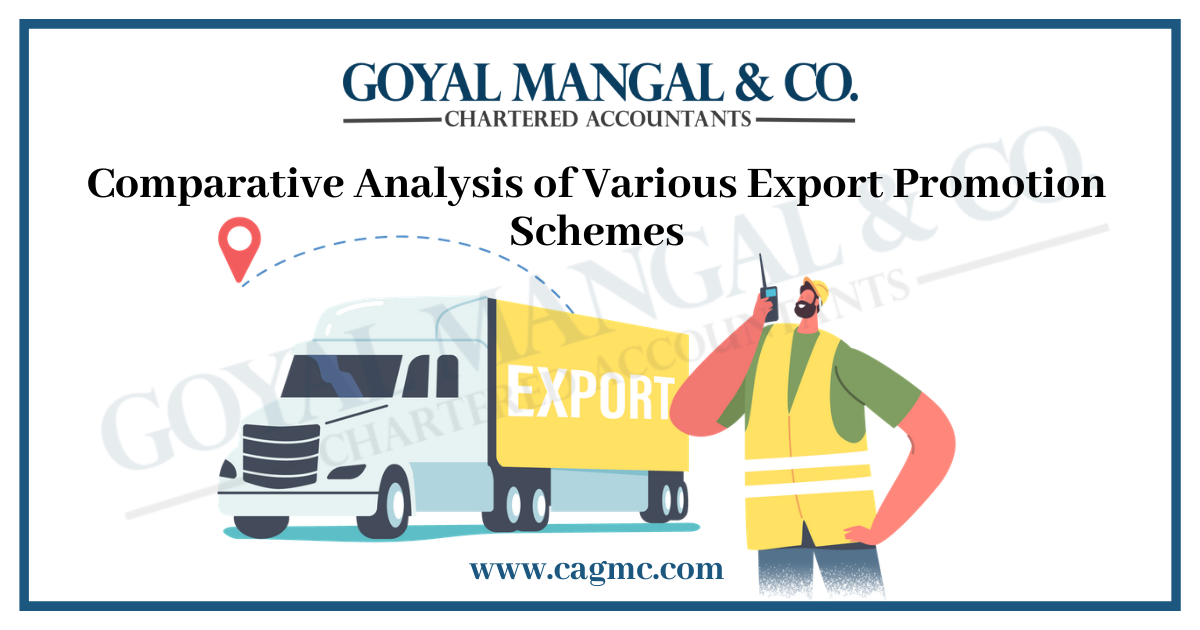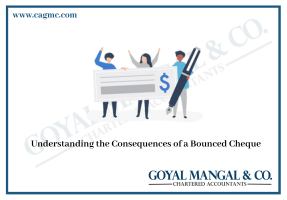
India is one of the world’s largest nations but still does not come a top 10 ranking in the list of top exporting nations. In the case of improving the exportation of India, the Government of India has introduced various Export Promotion Schemes (EPS). It is a crucial tool for governments to enhance the competitiveness of their exports and increase their share in the global market.
India, being one of the fastest-growing economies in the world, has implemented several EPS to promote its exports and create a conducive environment for its exporters. These schemes aim to reduce the cost of exports, upgrade technology, and machinery, provide financial assistance, and facilitate access to new markets.
In this article, we will be providing a comparative analysis of various EPS executed in India. We will evaluate the impact of these schemes on exports and identify their strengths and weaknesses. The article will also examine the eligibility criteria, incentives, and implementation process of each scheme.
|
Table of Content |
What do you mean by Export Promotion Schemes?
EPS is a supported program by the government, which aims to encourage exports from a country by providing financial and non-financial assistance to exporters. EPS is designed to reduce export costs, extend market reach for exporters, and increase competitiveness.
It is beneficial for exporters as EPS mainly gives a range of incentives and other services supports. Likewise export guarantees, financing, marketing, infrastructure, credits, insurance, infrastructure and subsidies.
The main goal of an EPS is to increase the competitiveness of the country’s exports in the international market. It also helps in increasing its share in the world trade. It may also focus on particular areas or products, promote foreign investment in the country, and offer targeted assistance to small-medium-sized enterprises.
EPS can be executed at various levels like national, state or local one. It is designed for short-term or long-term purposes. The main features and scope of it depend on country to country along with the requirements of their respective export sectors.
Detail discussion about various EPS
EPS is designed to provide financial assistance and other incentives to exporters to promote exports from a country. These schemes are aimed at reducing the cost of exports, increasing competitiveness, and expanding market reach for exporters. These are as:
- Merchandise Exports from India Scheme (MEIS): It provides an incentive of cash up to 7% on the Free on Board (FOB) value of exports in suitable sectors. Such as handicrafts, agriculture, and textiles.
- Export Promotion Capital Goods Scheme (EPCGS): It gives duty-free imports of capital goods to eligible exporters with the aim of manufacturing goods for export.
- Special Economic Zones (SEZs): SEZs are designated areas where enterprises can function with special incentives involving support of infrastructure, duty-free imports, and tax holidays.
- Foreign Trade Policy (FTP): FTP outlines the government’s policies and measures for promoting exports and reducing trade barriers. The policy provides various incentives to exporters, including duty drawback, advance authorization, and status holder benefits.
- Market Access Initiative (MAI): MAI provides financial assistance to exporters to participate in trade fairs, exhibitions, and buyer-seller meets
- Market Development Assistance (MDA) Scheme- It is an Indian government initiative that aims to give financial assistance to exporters for promoting their products in international markets.
Comparative study of various EPS
Here is a comparison between several EPSs in India:-
| Specifications | MEIS | EPCGS | SEZs | FTP | MAI | MDA |
| Objective | The scheme’s purpose is to encourage exports and boost the country’s share in the world’s commercial market. | This scheme’s objective is to improve machinery and developed technology utilized in export manufacturing. It is also increasing competitiveness in export. | The scheme’s objectives are to create employment opportunities and attract more investments from foreign. | To promote India’s exports, enhance its competitiveness in the global market, and create employment and economic growth. The FTP sets out the strategies and measures that the government will take to achieve these objectives. | The scheme aims to enhance the visibility of Indian products and promote exports in new markets. | To encourage Indian exporters to participate in trade fairs, exhibitions, and other marketing events abroad to promote their products. It also aims to increase awareness about Indian products in international markets and to help Indian exporters compete with their international counterparts. |
| Types | There are two types of MEIS:
|
Two types:
|
Four types:
|
Various schemes come under FTP such as MEIS, SEIS, SEZs, etc. | Marketing Development Assistance (MDA). | Two types of MDA:
|
| Benefits | It boosts export competitiveness, gives financial support, increases employment opportunities, inspires innovations, and promotes diversification | It reduced customs duty, time-bound utilization, export obligation, capital goods financing, and transferability. | Tax benefits, access to a global market, employment opportunities, simplified regulatory framework, foreign investment, and infrastructure and utilities. | Promotes exports, simplifies the process, encourages foreign investment, supports MSMEs, increases competitiveness, promotes sustainable development, and provides policy stability. | Increased market access, facilitates market research, huge competitiveness, and promotes branding and packaging. | Provide financial assistance, enhanced brand image, increased exports, networking opportunities, and access to new markets. |
| License validity | 12 to 24 months | Zero-duty -Valid for 24 months;
3% EPCGS scheme- valid for 18 months |
For Multi-product SEZs- validity is 5 years; and for FTWZs valid for 15 years | 24 months | It depends on the specific project or activity for which MAI assistance has been provided. | |
| Eligibility & investment criteria | For specified goods as per scheme instructions; in case of investment, there is no specific investment amount required. | It is available to all exporters who are registered with the Director General of Foreign Trade (DGFT) and have a valid Import Export Code (IEC) number | Any individual, company, partnership firm or any other entity; must be incorporated; positive net worth, and not have been blacklisted or debarred from a government agency. | Eligibility for availing of the benefits under the FTP depends on the type of scheme and the nature of the goods or services being exported or imported. | Its turnover was at least Rs. 30 Lakhs in the previous year. Must have a sound financial record. The proposed market development project or activity must be viable and have a clear implementation plan. | Eligibility criteria:
Should be registered; should have valid export order; should not have defaulted on any export obligation; should have completed at least a year of export business. |
| Who can avail of the benefit of the scheme? | Manufacturer exporters, merchants, service exporters, etc. | Avail who are registered with DGFT and have valid IEC | Manufacturing units, service providers, Trading companies, IT and ITES companies, and Startups and entrepreneurs | By any person, company, firm, or organization involved in the export/import of goods and services from India | To all Indian exporters who fulfil the eligibility criteria mentioned in the previous response. The scheme is particularly beneficial for small and medium-sized enterprises (SMEs) and exporters from sectors that have a high potential for export growth, such as agriculture, textiles, handicrafts, and engineering goods. | Indian manufacturers and merchant exporters. |
| Necessary for registration/ license | It is not necessary to apply for the benefits of this scheme | Need to obtain a license from DGFT | Yes, it is necessary | Yes, it is necessary | Yes, it is required to register with DGFT. | Yes, need to be registered. |
| Obligation of export | Calculated as a percentage of the realized Free on Board (FOB) value of exports of specified goods during a particular period. | The export obligation refers to the requirement to export goods or services of a value equivalent to a certain percentage of the foreign exchange saved on the import of capital goods. | A manufacturing unit is needed to achieve a positive Net Foreign Exchange (NFE) | These schemes may include export obligations, which require the exporter to meet certain targets for exports of specified goods or services to be eligible for the benefits or incentives under the scheme. | This scheme does not impose any specific export obligations on the participating exporters. Instead, the scheme aims to support Indian exporters in expanding their presence in foreign markets through various market development activities, such as market research, participation in trade fairs and exhibitions, and buyer-seller meets. | If an exporter has availed of MDA assistance for participating in a trade fair or exhibition, they may be required to submit a report on the outcome of their participation and the exports generated from it. |
Takeaway
Through the above-mentioned information, we can conclude that the export promotion schemes introduced by the Government of India. That is playing a significant role in boosting exports and encouraging economic growth. Now, it’s upon the exporters to choose the best suitable scheme as per their requirements. It also depends upon various other factors like the nature of goods, markets target and business model. Exporters have to comply with the eligibility criteria and other terms and conditions, which are mentioned by the scheme to avail the benefit of it.







